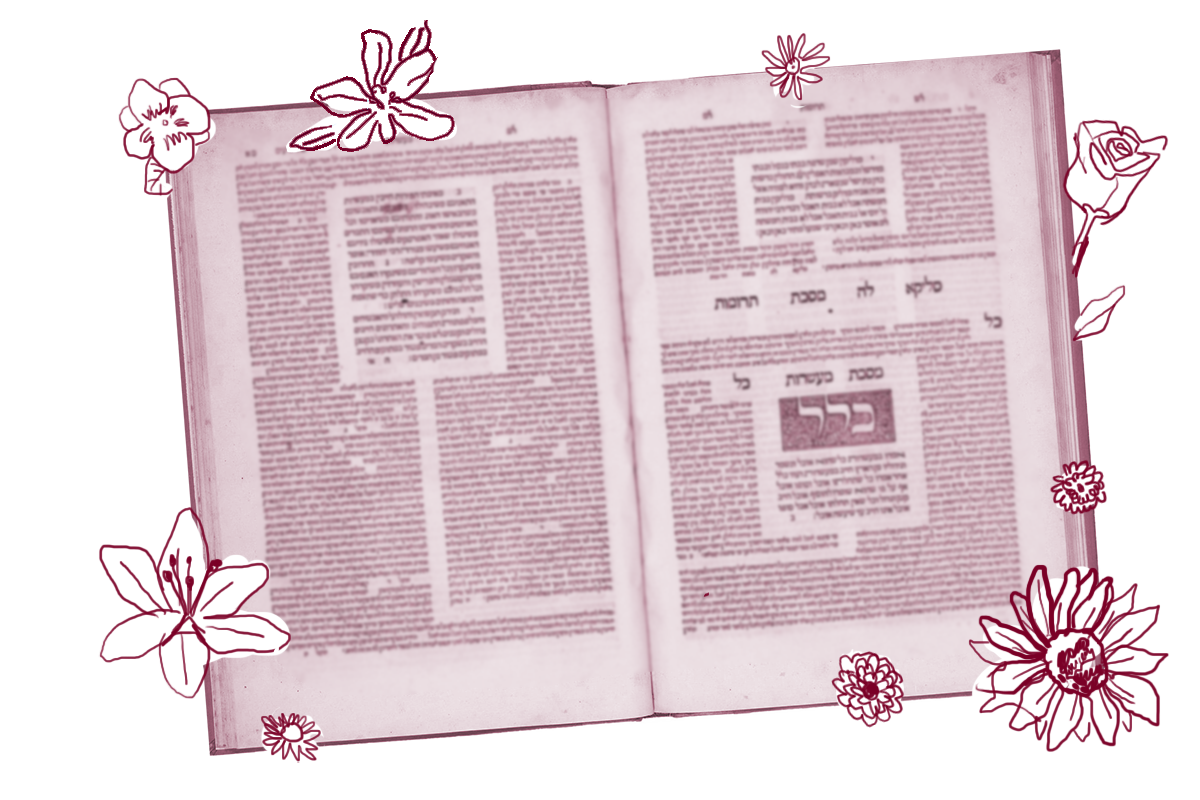We learn from a mishnah on today’s daf that there are three kinds of bills of divorce that are invalid, but if a woman receives them and then remarries, the children from the second marriage are not considered to be illegitimate. These include: A bill of divorce written in the husband’s handwriting but lacking two witnesses’ signatures, a bill of divorce that has no date (but is otherwise complete), and a bill of divorce that is complete except it has only one signature from a witness. The Gemara shares that a number of rabbis also hold that, in such a case, even though her divorce document was not perfectly in order, she is not required to leave her new husband:
Rabbi Yohanan said to the sons of Rabbi Halafta of Huna: Your father said the following two statements: That she is never required to leave him and that a kartzit in the sheaf does not disqualify water of purification.
Rabbi Halafta’s father was not only known for his position that a woman in possession of a get with the aforementioned flaws is nonetheless free to remain with her second husband, but also for his teaching about a kartzit, an animal that we’ll leave undefined for the moment.
So what is this second teaching about? The Torah, in Numbers 19, outlines the procedure through which people who become impure through contact with a dead body can become pure from a mixture of water and the ashes of a red heifer. Rabbi Halafta reportedly taught, as Rashi explains, that if a kartzit, which is normally found in the sheafs, drinks from the waters of purification, the waters are not disqualified from use.
With your help, My Jewish Learning can provide endless opportunities for learning, connection and discovery.
Based on a mishnah found elsewhere in the Talmud (Parah 9:3), Rav Daniel bar Rav Ketina objects:
If a domesticated beast or a wild animal drank from it (the waters of purification), it becomes invalid. All birds cause invalidity, except the dove since it only sucks up the water. All creeping things do not cause invalidity, except the weasel since it laps up the water.
Animals are known to be messy drinkers, and generally slosh some water back out of their mouths. (If you have a dog, you’re probably quite familiar with this phenomenon.) It is this, according to the mishnah, that renders the purification mixture no longer fit for use in the ritual. The dove and the weasel are exceptional because the way in which they drink prevents any backwash — and they do not disqualify the mixture.
If, argues Rav Daniel, the karztit were also an exception to the rule, then the mishnah would have taught, “all birds disqualify the water except for the pigeon and the kartzit.” But since the mishnah does not specifically mention the kartzit as an exception, it too must invalidate the water. This is a challenge to the father of Rabbi Halafta. And it also gives us some important information about this mystery animal; it suggests that the kartzit is some sort of bird.
But ultimately, that’s not how the Talmud defines it:
What is a kartzit? Abaye said that it is a species of fly that is found between the sheaves.
Modern commentators agree with Abaye that a kartzit is some kind of insect, but offer a range of potential interpretations. The Jastrow dictionary says it’s a big fly or locust, and Rabbi Adin Steinsaltz suggests that it may be a grain-eating species of beetle.
So what exactly is a kartzit? This is the only daf in the Talmud that mentions it and without other passages for comparison we do not have a lot to go on. So it is difficult to know for sure. And not only in this instance. Many individual plants, animals and even everyday items mentioned in the Talmud are difficult to identify from the texts we have.
If only the Talmud had pictures.
Read all of Gittin 86 on Sefaria.
This piece originally appeared in a My Jewish Learning Daf Yomi email newsletter sent on August 10th, 2023. If you are interested in receiving the newsletter, sign up here.



